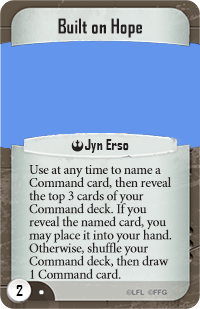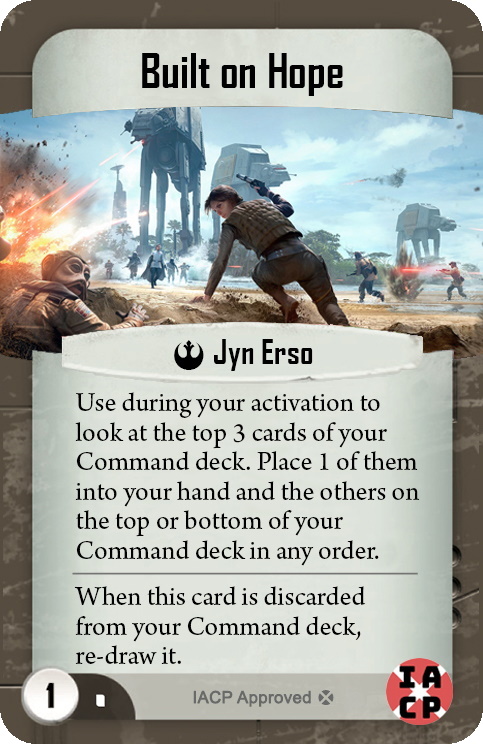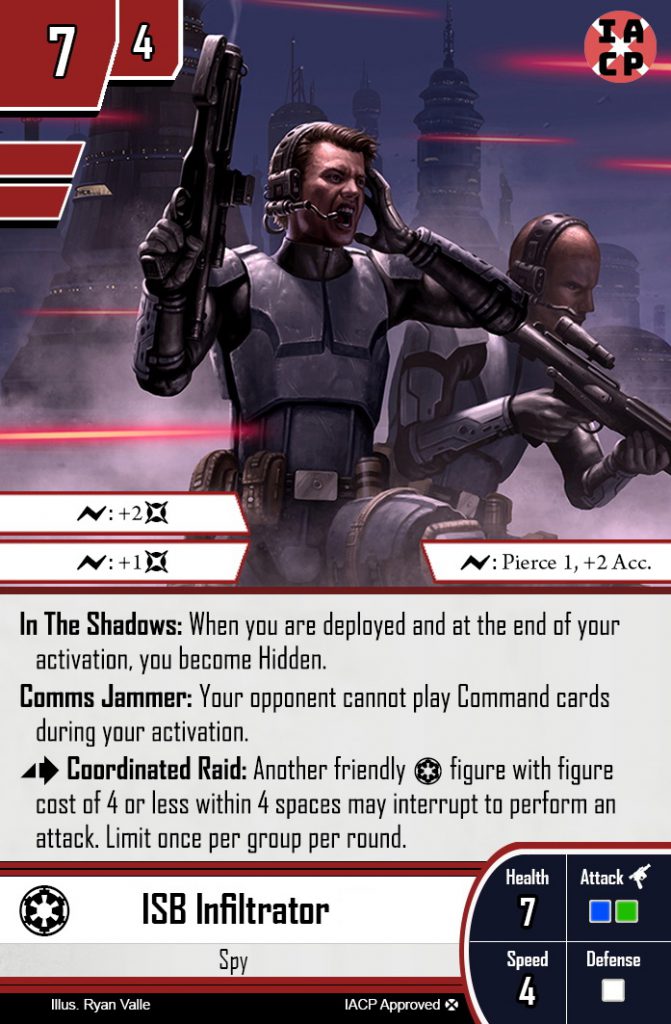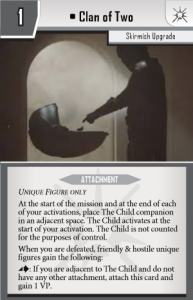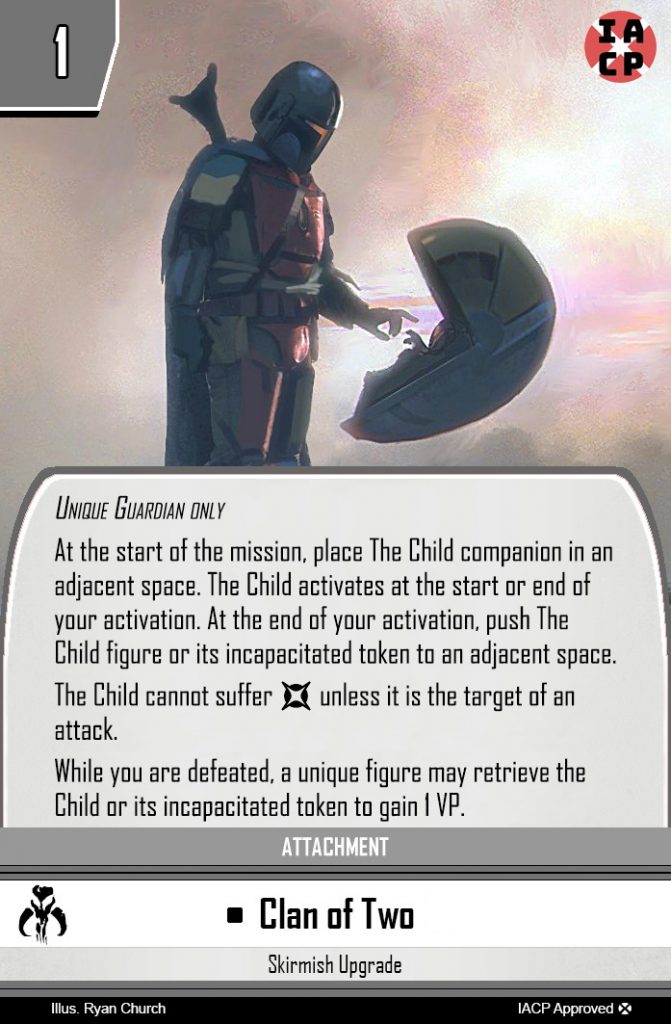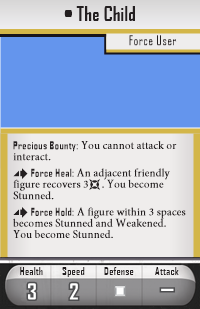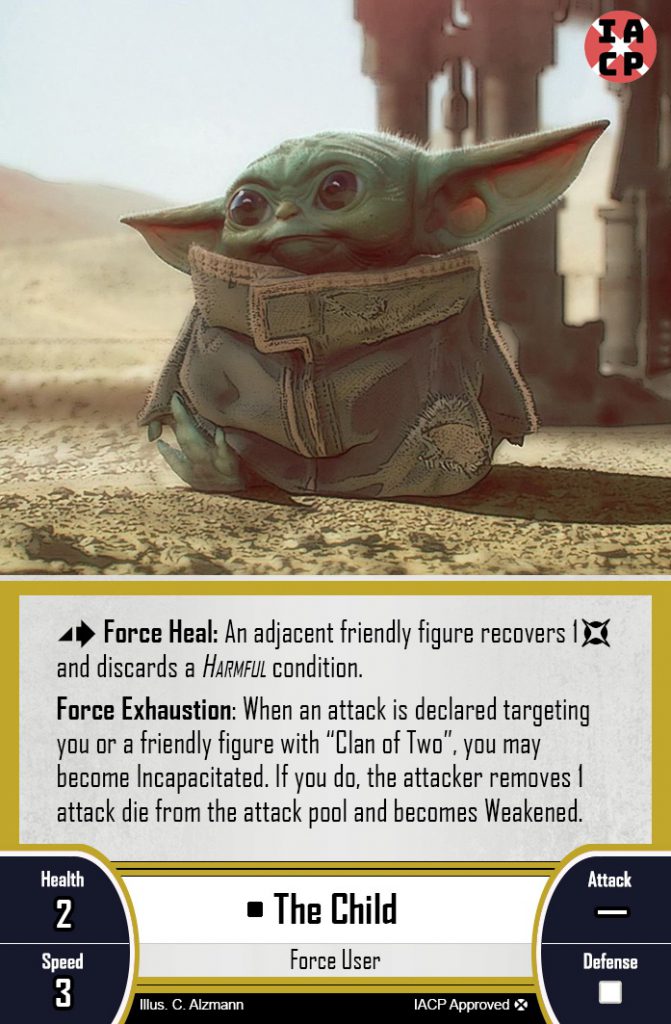Season 4 was the first full Season of IACP that I was involved in creating from start to finish, and I realized looking back that while I did a bunch of design stories for cards from Season 3, I never did anything like that for Seasons 4 and 5. Instead of talking about every single card in the season, I decided I had enough time to talk about just a few cards that I was heavily involved with creating that also had a lot of interesting stories that led from their initial ideas to their final released version.
Also it helps that enough time has passed between these cards being approved and now, because it means that most of you will by now know what these cards do, and I so I can show you some mock-ups I have of these cards original pre-release designs. Normally we don’t show pre-release versions of cards because it can already be confusing enough when players are having to deal with multiple versions of the same card being updated throughout a playtest season without us also showing old versions of a card that never got released, but I think it’s okay to make an exception here now that these cards have been in play in their final forms for over a year.
Built on Hope
My original pitch for this card was to make it an exciting gamble card where you pray for exactly the card you need in a given situation and if it’s in the top 3, you get the card into your hand. The failcase was to draw a card if you missed (I think in the very first version it drew a card whether you missed or not). The idea was to capture the feeling of Hope that the card you needed was just a few draws away and having that awesome moment where you revealed and drew exactly the card you were looking for.
We found that through playtesting, it was very likely that this type of card would be used most of the time to dig for just 3 cards: Take Initiative, Negation, and On the Lam, and it gave access to a player’s most powerful cards a bit too consistently and made games play out the same way too often. It was changed to grab any card from the top 3 but only be used during Jyn’s activation so that you couldn’t play it at the last second with perfect information of what you had drawn during the status phase.
Publicly revealing the cards was initially very important to me for the original card to allow the opponent to share in the moment where the player found the exact card they were looking for, but in moving the timing from being any time to only during Jyn’s activation, and removing most of the “luck” factor from the card, the opponent being able to see the 3 cards that Jyn revealed and the card she took didn’t really create the same kind of excitement as when it happened at instant speed with a win/lose outcome. And players loathed giving away so much information to their opponent in the feedback we were getting so we changed the card so that only the player using the card got to look at the cards. We also added the option of putting the cards that weren’t chosen back on top of the deck, because if the 2 cards that weren’t chosen were good cards they wanted to draw later, players didn’t like that they had to give up access to them for the rest of the game by putting them on the bottom of the deck.
Finally, I added the ability that allowed the card to be re-drawn when discarded from the deck as a way to maintain the flavor of hope on a card, and to add some sizzle to the card and keep it from feeling too much like a generic card draw ability. To me, discarding cards from your deck is always a very demoralizing and stressful experience, because you dread blindly flipping over one of your stronger command cards into the discard pile. But so long as Built on Hope was in your deck, it means there is the hope that a card being discarded off of the deck could turn into getting your best card from your deck into your hand instead of into your discard pile.
The reason it doesn’t trigger off of discarding from the hand like other similar Command cards released in later seasons, like Doctor Aphra’s Command card and Bib Fortuna’s new Command card, is because we had to be mindful of the fact that non-Rebel lists can include these cards in their deck and use it as repeatable discard fodder for cards like Zillo Technique. We’ve been very careful about the types of abilities we let a card have if it triggers off of being discarded from the hand to make sure they can’t be abused.
ISB Infiltrators
After more subtle changes to the ISB Infiltrators in Season 3 failed to leave an impression on players, we knew we had to do more with them in Season 4. After some initial brainstorms that included some pretty complex ideas for new mechanics, the ideas that everyone seemed to like was preventing the opponent from playing Command cards during the Infiltrator’s activation, and expanding Raid to work with 4-cost figures outside of the Infiltrator’s group. Comms Jammer was actually an idea for an ability I had put onto a custom Zuckuss figure I had designed before joining the IACP, but it likely would have been too powerful on a 3-dice Hunter figure, but seemed like it would be okay on these 2-dice Spies that didn’t have easy access to Focus, and we liked the synergy that it would have with being able to give bonus attacks to other 4-cost figures outside of their group. Defensive command cards were also becoming very popular in the Season 3 meta with cards like Knowledge and Defense, Iron Will, Get Behind Me, and Parry getting a lot of high level play, so this ability seemed like it would positioned really well to succeed against the competitive metagame.
I believe In the Shadows as actually an ability that was suggested by the IA Community when we made a post in the Zions Finest Slack channel asking people to share their ideas for how to make ISB Infiltrators work, though unfortunately those discussions are now lost to time and Slack’s 10,000 message limit. It would later be updated to trigger when they were deployed to make it work with Lie in Ambush and not just after they activate on round 1.
We realized that we didn’t want to be able to give the Comms Jammer ability to something like Greedo being Temped into an Empire list, so the Empire only figure restriction was added to Raid. We also realized in testing that we didn’t like how easy it was for a single ISB Infiltrator to hang back and give Raid commands from the deployment zone, or for a figure to double move on round 1 and be able to get an early attack off thanks to an infinite range Raid, so a fairly generous range 4 restriction was added, as we still wanted to make it as easy as we could to allow an Infiltrator figure to both attack and use the Raid action in the same activation.
Finally, Deadly was removed to facilitate the addition of In the Shadows and Comms Jammer, as we felt 4 abilities was too many for a generic figure group. Initially I was hesitant to let go of Deadly as they were the first figures to introduce the ability, but it was pointed out to me that from the perspective of the player defending against these with a white die figure, not being able to at least hope for a dodge in addition to not being able to play any defensive command cards made it feel pretty hopeless to defend against these, which is a feeling you generally don’t want a player to ever feel in a game (because it makes players want to stop playing). So I got on board with removing Deadly to allow Comms Jammer to be added.
Clan of Two
Probably the card that changed the most throughout Season 4’s internal development. Originally a neutral attachment that could be equipped to any unique figure. This made it very hard to balance, as we knew we wanted it to do some kind of healing for friendly figures as well be able to inflict some kind of status condition on hostile figures, based on the abilities we had seen from the Child in Season 1 of the television show. We were especially worried about giving the Empire access to repeatable damage recovery every turn, so eventually it ended up becoming a Scum only upgrade, and then later got the extra restriction of Guardians only to make sure it couldn’t go on something like Boba Fett and to keep it tied to its two main guardians from the show that were being featured in IACP Season 4, IG-11 and The Mandalorian.
The other really weird thing that Clan of Two was doing early on was attaching itself to the opponent’s figures when they picked up the Child companion after the original carrier had died. Then the new carrier would have the Child as their companion and gain access to all of its abilities. I remember trying to make this work in templating but it got really weird, especially when there was a Clan of Two card on each players army and sometimes one player would have control of 2 different Child companions. We realized that with so many moving parts, we needed to simplify each of this card’s aspects as much as we could, and that just having other figures be able to pick up the child companion token was much simpler and was good enough at conveying the flavor we wanted. In hindsight I do kind of wished we had dropped the requirement that only unique figures could pick up the child, since that was more relevant when doing so gave you access to the Child’s abilities.
In playtesting it was noticed that the Child would just randomly die very easily to splash damage from things like Grenadier and Cleave even if you weren’t allowed to attack it, so we added the clause that the Child can only suffer damage if you attack it, to make sure that the opponent could at least make the effort to kill the child with a direct attack if it was being especially disruptive to them, but that way killing the Child wasn’t just always a freebie to the opponent.
And then we also realized that we couldn’t rely on placing the Companion into a space each round as a way of moving it with its base figure, because placing a companion into a space is different than doing that with a normal figure like Ahsoka. When you place a companion into a new space, it effectively becomes a new figure and it discards any damage or conditions it had on it, so to fix that problem we came up with the solution of pushing it infinite spaces until it was adjacent to its base figure.
The child itself was also difficult to figure out. We knew early on based on the way it worked in the tv show that we wanted the Child to be very powerful but have some kind of steep cost to use its abilities. The original idea was for it to become Stunned, but in playtesting it was very easy to circumvent that since we needed to have the Child teleport to its master each activation for it to not get completely left behind.
We then added a strain cost to all of the Child’s abilities, with the idea being that with only 2-3 health, you’d only be able to use those abilities once or twice for free before you needed to start discarding Command cards or sacrifice the Child altogether. That stayed on the card through it’s initial playtesting release, but we realized that once we had added the Incapacitate cost to the Child’s strongest Force ability, we had already captured the flavor of the Child exhausting itself to use it’s strongest Force powers, and that the added resource management of managing the child’s Health through strain costs was adding unneeded complexity to an already very complex card. So we toned down the power of Force Heal and removed the strain cost from the ability halfway through the playtest period and that seemed to free up a lot of player’s mental space when reading the card for understanding how the rest of the card worked.
This card was a great of example of one committee member having a design concept vision of what they wanted a card to do based on its depiction in Star Wars media, and the rest of the Steering Committee coming together as a team to make it work as much as possible. I’m happy it got made into a major centerpiece of one of the designs for Season 6 and that a lot more players are going to get to experience how fun it is to play with this card.

